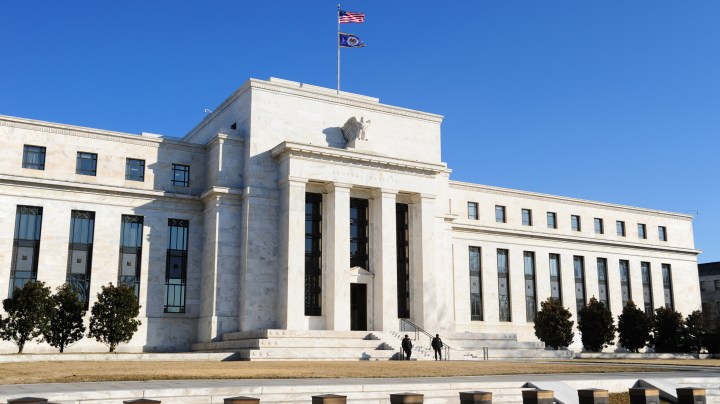
The Fed’s heightened rates are still way below historic levels
The Fed’s heightened rates are still way below historic levels

The Federal Reserve hiked rates by 75 basis points last week to curb inflation, the highest single increase since November 1994. While that may seem like a big boost, the overall target range is still relatively low, at 1.50-1.75%, compared to over 4% throughout 2007 in the lead-up to the Great Recession.
For today’s Economic Pulse, “Marketplace Morning Report” host David Brancaccio checked in with Dr. Trevon Logan, professor of economics at The Ohio State University, who talks about the unique challenges the central bank faces as it attempts to ease the pain of inflation. The following is an edited transcript of their conversation.
David Brancaccio: Dr. Logan, I remember seeing a film of a device, this contraption in the basement of the London School of Economics. Pipes, valves, gauges; pour in money supply through that pipe, bring down interest rates with this control, inflation goes up. I’m thinking this will make you laugh, given the thinking that you’re doing about the Federal Reserve trying to turn off inflation with its valves? Does it make you laugh, just thinking about that contraption?
Trevon Logan: No, probably because there is this old thinking in economics about the effects of monetary policy and really doing that in a mechanistic sort of way. And I would expect it to be in the basement, because that would be a little old. But there is this thought about a sort of mechanistic relationship between Fed policy and output and the relationship with inflation.
Brancaccio: But does that lead us astray about how we should really understand the central bank’s role in dealing with this big problem we have?
Logan: Remember that the central bank has two central goals, which is to have price stability, to keep inflation in check, but also to ensure full employment. And the question is, when those are at odds, what to do. Typically people have thought about the relationship as one of the Phillips curve, right, there’s this tradeoff between inflation and unemployment. And that has really not necessarily been the consensus among macroeconomists for some time now. But we’ve also been in pretty unique macroeconomic times, for an extended period of time. And I think that’s one of the most interesting aspects of this.
Brancaccio: Yeah. And the corollary of that is that interest rates stayed pretty darn low, abnormal, for a very long time.
Logan: When we track this, sort of looking at this historically, essentially from 2008 on we’ve had a federal funds rate that’s been sitting below a half a percent, and then it started to climb up in 2016. And now it’s back up to a high rate. But we hadn’t seen federal funds rates below that point, or really below 2%, at any point before 2000. So this is a really unique time. And I think one of the questions that I have as an economist is: “What is our new normal going to be?” And it’s certainly not going to be, I don’t think, anything that would look historically [like] what it has been for the federal funds rate. But it’s really unknown, when we are recovering to quote-unquote “normal,” and I want to stress that again, macroeconomic stability.
There’s a lot happening in the world. Through it all, Marketplace is here for you.
You rely on Marketplace to break down the world’s events and tell you how it affects you in a fact-based, approachable way. We rely on your financial support to keep making that possible.
Your donation today powers the independent journalism that you rely on. For just $5/month, you can help sustain Marketplace so we can keep reporting on the things that matter to you.












